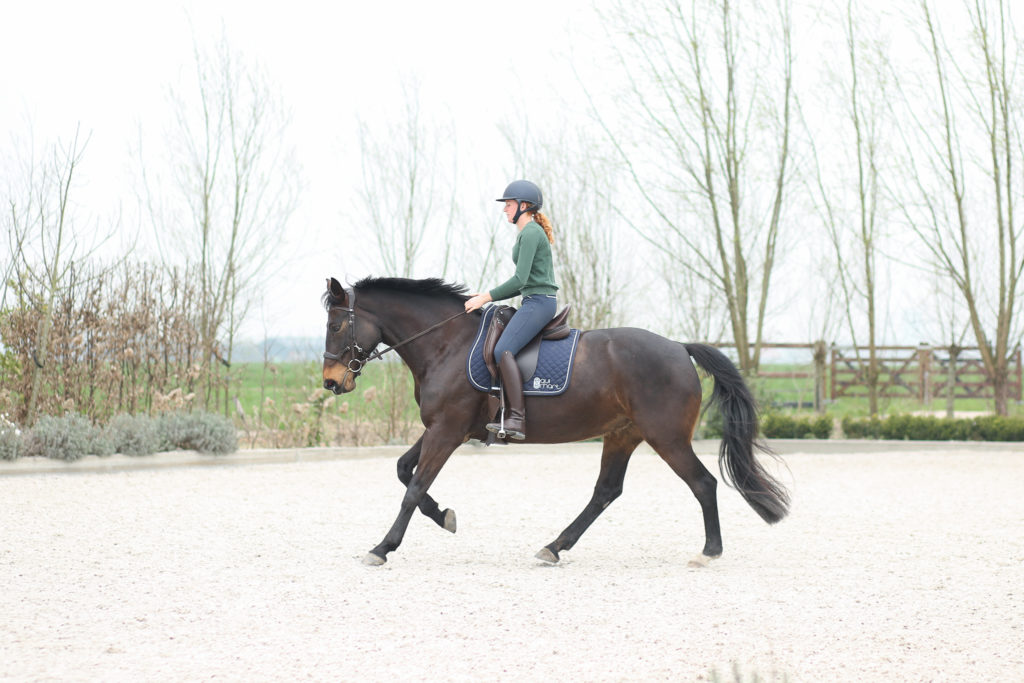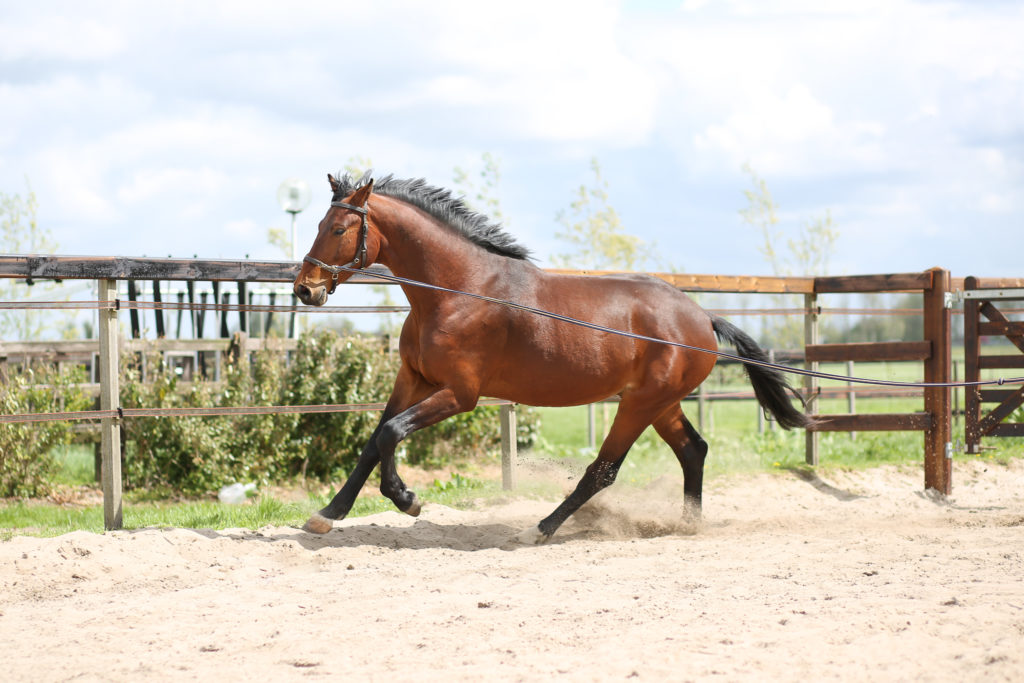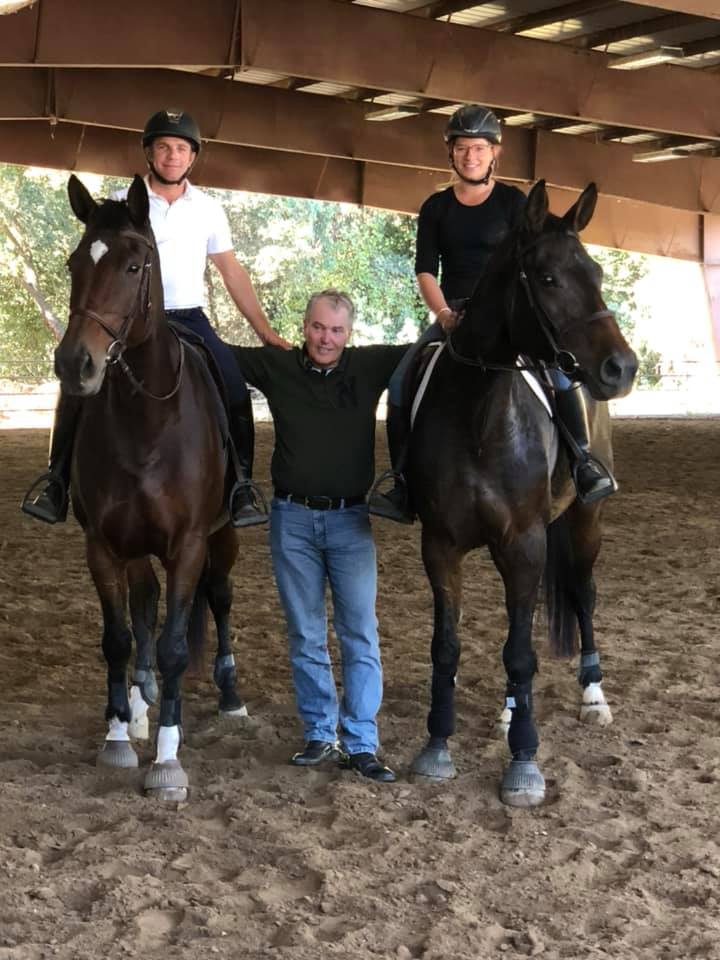Training Young Horses by Dr Gerd Heuschmann
TRAINING YOUNGSTERS
The first step to training a young horse is establishing a friendship. The baby has to be used to being with people, he has to be ready to be led, to be tied and to be touched. Horses need to be socialized and taught that humans are friends, not predators. They need to learn that humans are responsible leaders and can be trusted. Of course, you should never use force to develop a friendship, that simply does not work. When the youngster is socialized and willing to be with me, I would get him used to the saddle. I find that ponying is a very useful exercise for a young horse. The youngster goes along with an old, experienced horse, with or without a saddle. He should wear a cavesson or a halter, never a bit, so that there is no chance of pulling on the baby’s mouth. After a couple of weeks, we can introduce a rider. It is important that he or she has a stable, correct two-point seat and that they can adjust their movement to the horse’s movement. This way the horse learns that the person on his back is a friend. As soon as the horse accepts the rider, he should learn the driving aid. Developing the desire to go forward is of utmost importance in the young horse. The youngster soon learns that there is a leg on each side of his body and learns to accept this soft, respectful leg. This gives him direction. Steinbrecht calls this to give the horse direction. It’s a good phrase. Eventually you should be able to offer a soft bit and a nice contact that the horse accepts freely. This is something that is usually achieved in three to six months. Of course, there are exceptions. If you have a young horse that you can work in walk, trot and canter in a two point seat, with very little poll flexion, a long neck and a nice soft contact, you have done a great job starting a baby and you have given him the opportunity for the best physical development.

ENGLISH VS. WESTERN – IS THERE A DIFFERENCE IN TRAINING?
In my opinion, the training of a youngster in the first or even second year is very similar, regardless of whether we are riding in the western disciplines or the classical ones. A horse that we want to train for dressage or show jumping would benefit from the same kind of work as the western horse in the beginning. Many people who are training the horse for dressage, tend to pull in the horse’s head during the first rides, but this is not correct. If you manipulate the head and neck position directly with your reins, you will run into a problem further down the line. I would say that if we want to train the horse for dressage, we should behave a little bit like a cowboy in the first year. Give the horse a free neck. The only difference would be that, further down the line, when the horse has direction, rhythm and goes forward, you can offer a soft hand, so that there is a place for the horse to go. To quote Steinbrecht, the horse needs to fall in love with your hand. Perhaps if we are training for the western disciplines, we won’t be looking for the same type of contact, but influence the horse with a soft impulse through the rein. Otherwise, the basic principles, the biomechanics of balance, are the same. The work would start to differ as soon as the warmblood horse would understand contact better, would round at the poll and make a convex topline so the back would start to come up. At this point I would say the two disciplines would start to grow apart a little. But the youngster work is very similar.

HOW ABOUT GADGETS?
The classical idea of training horses needs nothing, not a single gadget, especially not a draw rein. The only time it would ever make sense to put any kind of side rein on a horse is when you have an older, experienced horse that knows how to carry himself properly, and you put a rider on for seat schooling without reins. Then you could put a very loose side rein to give this horse a certain balance. Side reins can do a lot of harm. Riders like to use them when the horse is stiff in the poll and he doesn’t want to put his head down. They put on a pair of side reins to show him how he should carry his head and neck. This will always lead to exactly the opposite result. You will always get a stiffer horse, a curling horse, a bucking and stressed out horse. It does not make sense. What you need to train a young horse is a saddle, a snaffle bit, a soft rein, a friendly hand. And of course, a good seat. This is all that you need.
IF YOU LIKED THIS POST, YOU MIGHT ALSO LIKE THE FOLLOWING:
Online Course: Equine Biomechanics: Head And Neck Position With Gerd Heuschmann
4-Part Blog Post for members of the Equitopia Membership Program – How The Horse Works By Dr Gerd Heuschmann (Part 1 Free for All)



